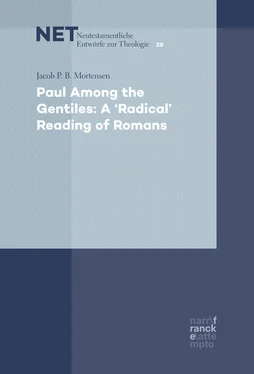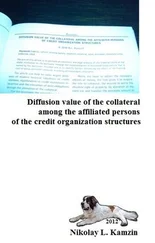Although Krister Stendahl is often connected with the ‘two covenant’ solution, and therefore may be considered a predecessor to the radical perspective, the scholarly evidence is rather meagre. However, his background story may confirm his proclivity for a ‘two covenant’ solution. He was ordained in the Church of Sweden in 1944 as a Lutheran minister, and served as a parish priest and chaplain in Uppsala. In 1954 he received a doctorate at Uppsala University, and in that same year he went to Harvard Divinity School as a professor of New Testament studies. He returned to Sweden to serve as the Bishop of Stockholm from 1984 to 1988, but in the early 1990s he was a professor at Brandeis University. At Brandeis he helped to inaugurate a programme intended to enhance shared values among students of many religious backgrounds. From 1994 and onwards he became co-director of the Center for Religious Pluralism at the Shalom-Hartman Institute in Jerusalem. In his later years he did extensive work to promote interfaith relations, especially between Jews and Christians.
In his Final Account (1995), Stendahl writes that Paul does not conceive of Israel’s salvation with reference to Christ; when Paul writes that ‘all Israel will be saved’, he does not say, ‘Israel will accept Jesus Christ’.5 This point of Stendahl’s is rather convoluted, but it may be said to support a ‘two covenant’ interpretation. It may also be said to reflect a respect for Israel’s religio-ideological position, and their religious peculiarity. John Gager’s work is more outspoken in its support of a ‘two covenant’ solution.6 Gager maintains that the Jews will continue to be the people of God after the coming of Christ, and that Christ is the saviour exclusively of the Gentiles, not the Jews. Israel stands in a covenant relationship with God and enjoys a right standing with God because of God’s covenant faithfulness to them, as promised by the (Mosaic) law. Gager endorses E.P. Sanders’ concept of ‘covenantal nomism’,7 and he advocates an entirely positive picture of Judaism. This leads Gager to state that Paul never urged the Jews to accept Christ as their Messiah, nor did he condemn them for refusing to do so. And because Israel has been in a right standing with God since long before the Gentiles came into view, Gager reverses the meaning of the Sonderweg interpretation. According to Gager, Israel’s salvation was never in doubt. What Paul taught and preached was instead a ‘special way’ to salvation for Gentiles through Christ.8 The ‘original’ way was Israel’s remaining within its covenant relationship with God.
Lloyd Gaston is a predecessor of the radical new perspective on hermeneutical and theological grounds, rather than on historical ones. In his book, Paul and the Torah (1987), he opens his introduction presenting his novel take on Paul’s letters. First, he explains that his writing is part of (but not only) a ‘theology after Auschwitz’.1 According to Gaston, the insights from the Holocaust must result in a complete reversal of Christian theology, but not in a revision of the biblical texts. For one thing, this means that New Testament scholarship should expose underlying anti-Semitic currents, but it also means that New Testament scholarship may acquire new perspectives on Paul by being in contact with modern, post-Holocaust Judaism. By way of a ‘hermeneutic of experimentation’,2 Gaston invites scholars to address traditional problems of interpreting Paul from an entirely different angle than the usual one. Thus, instead of perceiving Paul as having assailed the foundations of Judaism, Gaston finds in Paul various statements concerning God’s continual election of, and love for Israel. He explains about the beginning of his project on Paul, that he ‘expected to find anti-Judaism particularly in Paul’.3 However, by way of his ‘hermeneutic of experimentation’, he realized that the Christian church did not replace Israel as God’s chosen people. To the contrary, Paul often identifies an ongoing covenant relationship between God and Israel: ‘Do we then overthrow the law by this faith? By no means! On the contrary, we uphold the law’ (Rom 3:31). Paul makes a similar statement elsewhere: ‘I ask, then, has God rejected his people? By no means!’ (Rom 11:1).
There are two access points to Gaston’s ‘opposite’ conclusions. The first concerns his positioning of Paul within Second Temple Judaism. In this regard, Gaston continues the work of E.P. Sanders. He writes: ‘… I shall assume that Paul understood ’covenantal nomism” very well indeed and that he is to be interpreted within the context of early Judaism …’4 However, the other approach to Gaston’s conclusions about Paul concerns Paul’s audience. The reason that Paul did not write in an anti-Semitic vein was because he did not write about Judaism for Jews; he wrote about Judaism for Gentiles. Because Paul really understood the concepts of covenant and commandment from within Judaism he could present Judaism in a different way to outsiders of Judaism. When summarizing the conclusions of his book, Gaston provides six headings, four of which concern Gentiles. Hence, four of the conclusions of Gaston’s work may be summarized as ‘Gentiles as Addressees’, ‘The Gentile Predicament’, ‘Gentiles and the Law’, ‘Israel and the Gentiles’.
Many scholars consider Stanley Stowers’ book on Romans, A Rereading of Romans (1994), the most significant contribution to the discussion of Romans since E.P. Sanders’ Paul and Palestinian Judaism (1977).1 Indeed, Stowers embarks on a complete rereading of Romans, even if some parts of the letter receive more attention than others.2 Stowers continuously positions his own reading in opposition or as a challenge to what he designates a ‘traditional’ (Augustinian–Lutheran–Christian) interpretation of Romans. He does that in order to present a more ‘correct’ historical understanding of Romans. According to Stowers, Paul was not preoccupied with questions of human sinfulness and salvation, nor was the Judaism of his time. In this regard, Stowers’ rereading of Romans depends on, and further elaborates on, the new perspective on Paul and Krister Stendahl’s approach: He rejects Augustinian (and subsequent Western) readings of Paul; he emphasizes the ethnic rather than the individual aspects of Paul’s soteriology; and he conceives of the salvation of Jews and Gentiles as a ‘two covenant’ solution. Additionally, much of what Stowers argues may be found in Lloyd Gaston’s interpretations, even though Stowers does not seem to buy into Gaston’s hermeneutical and theological agendas.
A complete interpretation of Stowers is far too complex to summarize adequately. Nevertheless, almost every part of Stowers’ rereading is relevant to the radical perspective on Paul. In order to mediate this problem, I will highlight some key points that indicate how Stowers may be said to be a predecessor to the radical perspective. First, Stowers constructs the audience throughout the letter as Gentile. He meticulously distinguishes between the ‘implied audience’ and the ‘real audience’ of Romans. He claims that we cannot know anything about the ‘real’ audience’ of Romans. But it is obvious from the letter that Paul constructs the ‘implied audience’ as purely and distinctively Gentile. Hence, there is no ‘universal’ address in Paul’s gospel, but (merely) an address from a Jewish apostle to Gentiles interested in Judaism, about a Jewish way of living. Secondly, Stowers treats key passages of Romans as examples of the diatribe style or ‘speech-in-character’ (προσωποποιία). The obvious speech-in-character passage is 7:7–25, but Stowers also identifies the figure of προσωποποιία in 2:1–16, where Paul addresses a boastful Gentile. Stowers also identifies speech-in-character in 2:17–4:21, but here it concerns Paul’s address to a Jewish teacher of Gentiles. It is important to Stowers that this teacher does not represent all Jews, but only a hypothetical Jewish teacher with whom Paul would compete for righteous Gentiles. Hence, there is no criticism of Judaism from Paul, merely a discussion with a(nother) teacher of Gentiles.
Читать дальше












